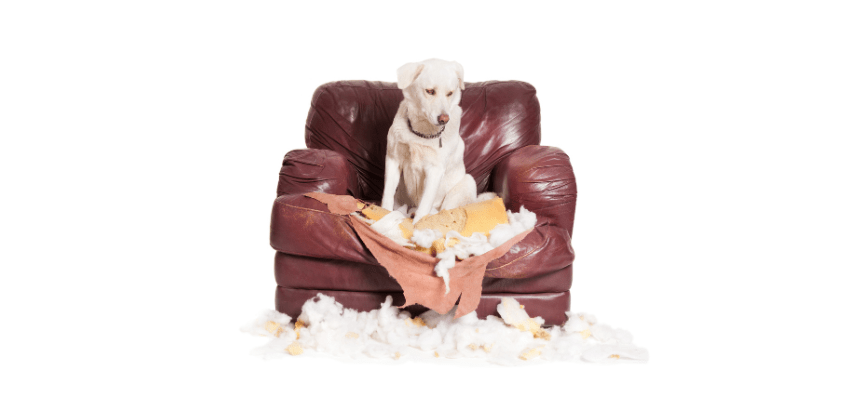Separation anxiety is one of the most common problems in dogs and can be a distressing situation for both pets and their owners. When a dog suffers from fear of being left home alone, it can manifest itself in destructive behavior, excessive barking or even health problems. Fortunately, there are effective ways to train your dog to feel more comfortable when you’re away. In this article, we offer some practical tips and recommended products to help your dog overcome separation anxiety.
What is separation anxiety?
Separation anxiety in dogs occurs when a dog becomes extremely distressed when left alone or separated from its owner. Common symptoms include:
- Excessive barking or whining.
- Chewing on furniture, shoes or household items.
- Attempting to escape, scratching at doors or windows.
- Urinating or defecating in the house, despite being house-trained.
If your dog exhibits these behaviors when you leave him alone, he may be suffering from separation anxiety.

Tips for training your dog to stay alone
1. Gradually accustom your dog to being left home alone. One of the most important steps in reducing separation anxiety is to teach your dog that being left alone is not stressful. Start by leaving him alone for short periods of time. Leave the house for a few minutes and return before your dog becomes distressed. Gradually increase the amount of time you spend away from the house until your dog is comfortable being left alone for several hours.
2. Create a predictable routine. Dogs are creatures of habit and a daily routine can help them feel more secure. Try to create a predictable routine for your dog when you leave the house. Walk him, feed him and play with him before you leave so that he feels relaxed and happy when you go. Avoid making a big farewell or homecoming as this can increase his anxiety. Instead, maintain a calm and neutral attitude when leaving and returning home.
3. Provide a comfortable and safe place. Having a place where your dog feels safe and comfortable can reduce anxiety. Use a comfortable bed or blanket in his favorite place in the house. You can also try cages or enclosed spaces, which can provide a sense of security for some dogs, as long as they are not used as punishment. Make sure the space is associated with positive things, such as his favorite toys or treats.
4. Provide interactive entertainment. When your dog is left alone, it’s important that he has something to distract him. Interactive toys, such as those that give out treats, can keep his mind occupied and prevent him from feeling lonely or bored. Toys such as Kong, which you can fill with food or snacks, are ideal for this purpose. Another option is a scent mat where your dog can hunt for hidden treats to keep him occupied and calm while you are away.
Suggested products for separation anxiety relief
1. Pet cameras: Pet cameras allow you to keep an eye on your dog while you’re away. Some cameras, such as Furbo and Petcube, even have interactive features, such as throwing treats or talking to your dog through a microphone. This can help reassure your dog if he shows signs of anxiety while you’re away.
2. Interactive toys: Interactive toys such as kong, puzzle toys or snuffle mats are great for keeping your dog entertained while you are away. These toys will stimulate his mind and provide positive activity while you are away.
3. Soothing Pheromone Diffusers: Products such as Adaptil emit synthetic pheromones that mimic the natural pheromones released by mother dogs to calm their puppies. These diffusers can help reduce your dog’s anxiety when he’s left home alone.
4. Anti-stress vest or harness: Some dogs benefit from wearing an anti-stress vest or harness such as the Thundershirt. These vests apply a constant, gentle pressure that helps calm dogs in stressful situations, including separation.

Training your dog to stay home alone without anxiety takes time, patience and consistency, but it is possible with the right methods. A combination of gradual training, predictable routines and stress-relieving products can make a big difference to your dog’s life. Remember that every dog is unique, so it is important to find what works best for your pet.
Popular Post
Can fish recognise their owners?
What does your reptile eat?
How can you train your
Archives
Email for newsletter
644 E Main St Alhambra, CA 91801
info@charlyspetworld.com
+1 626-289-4393










